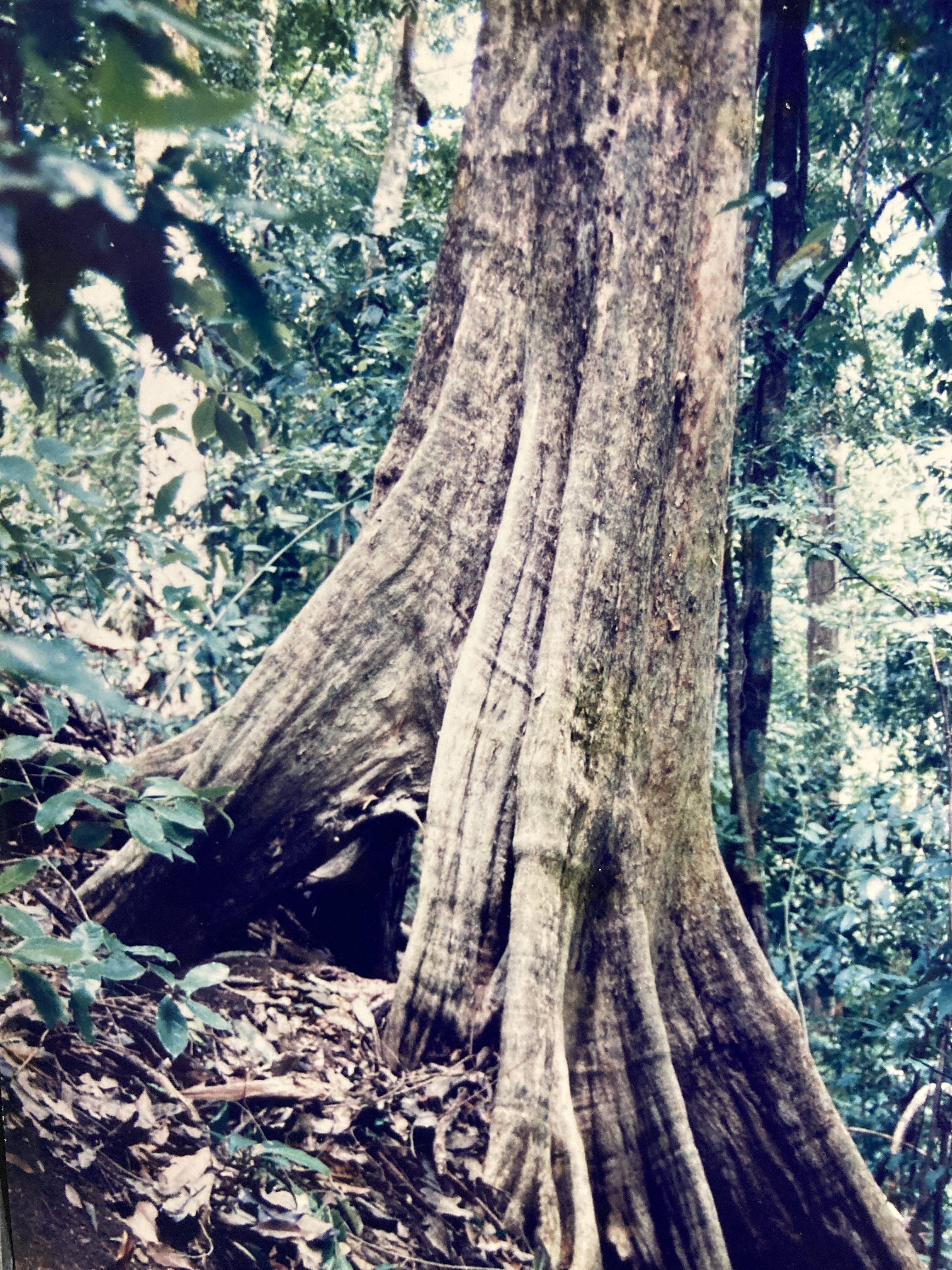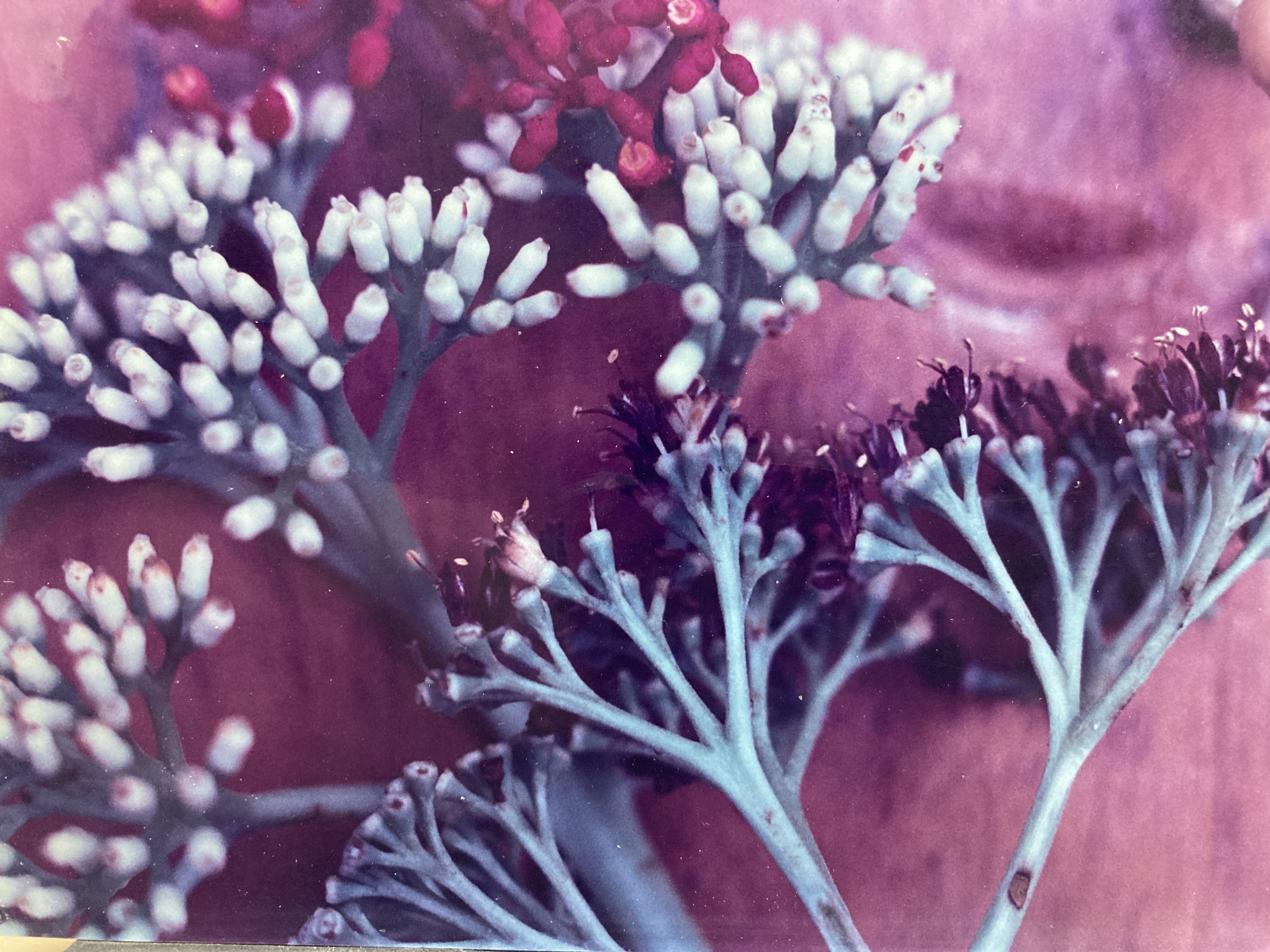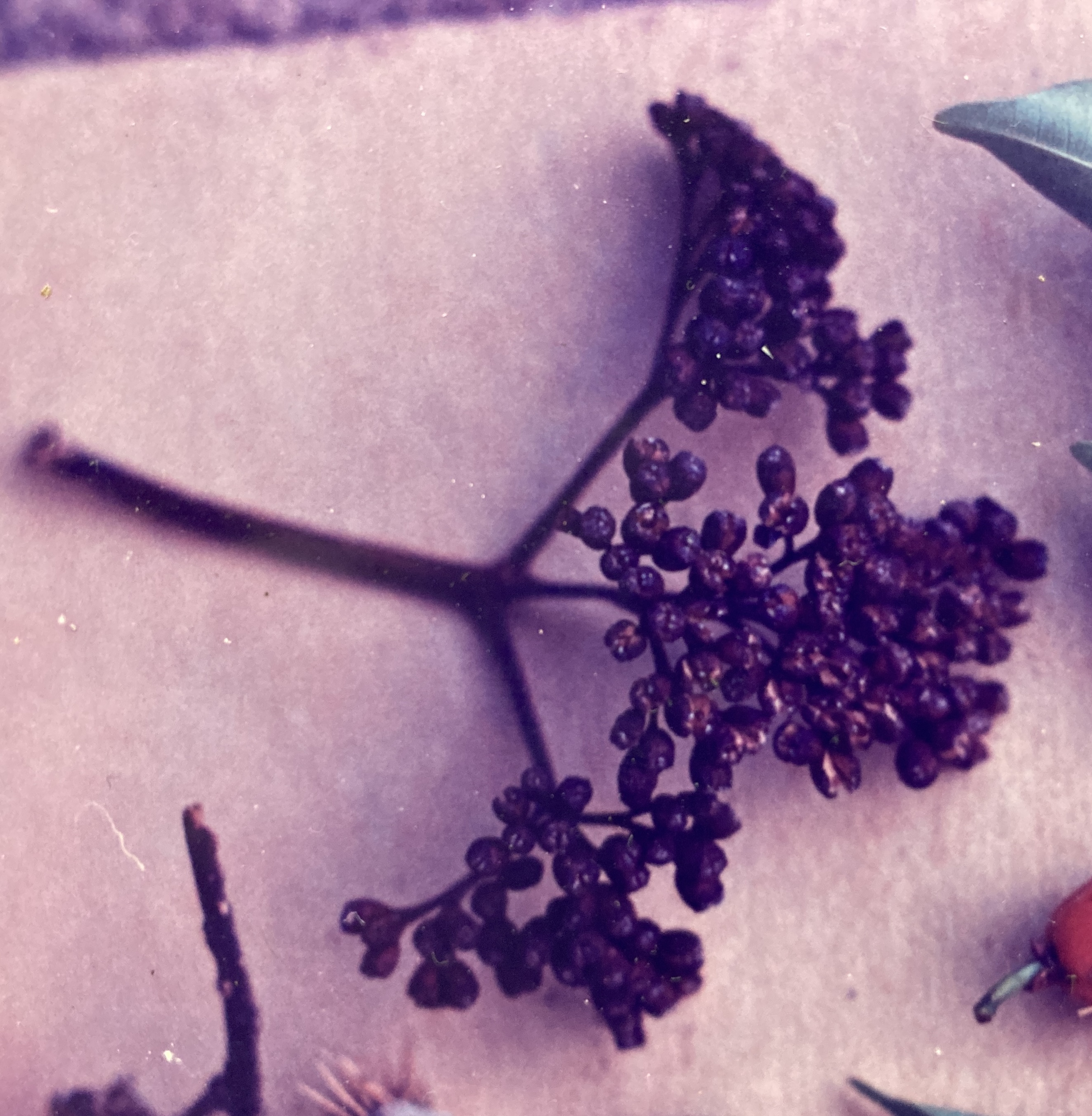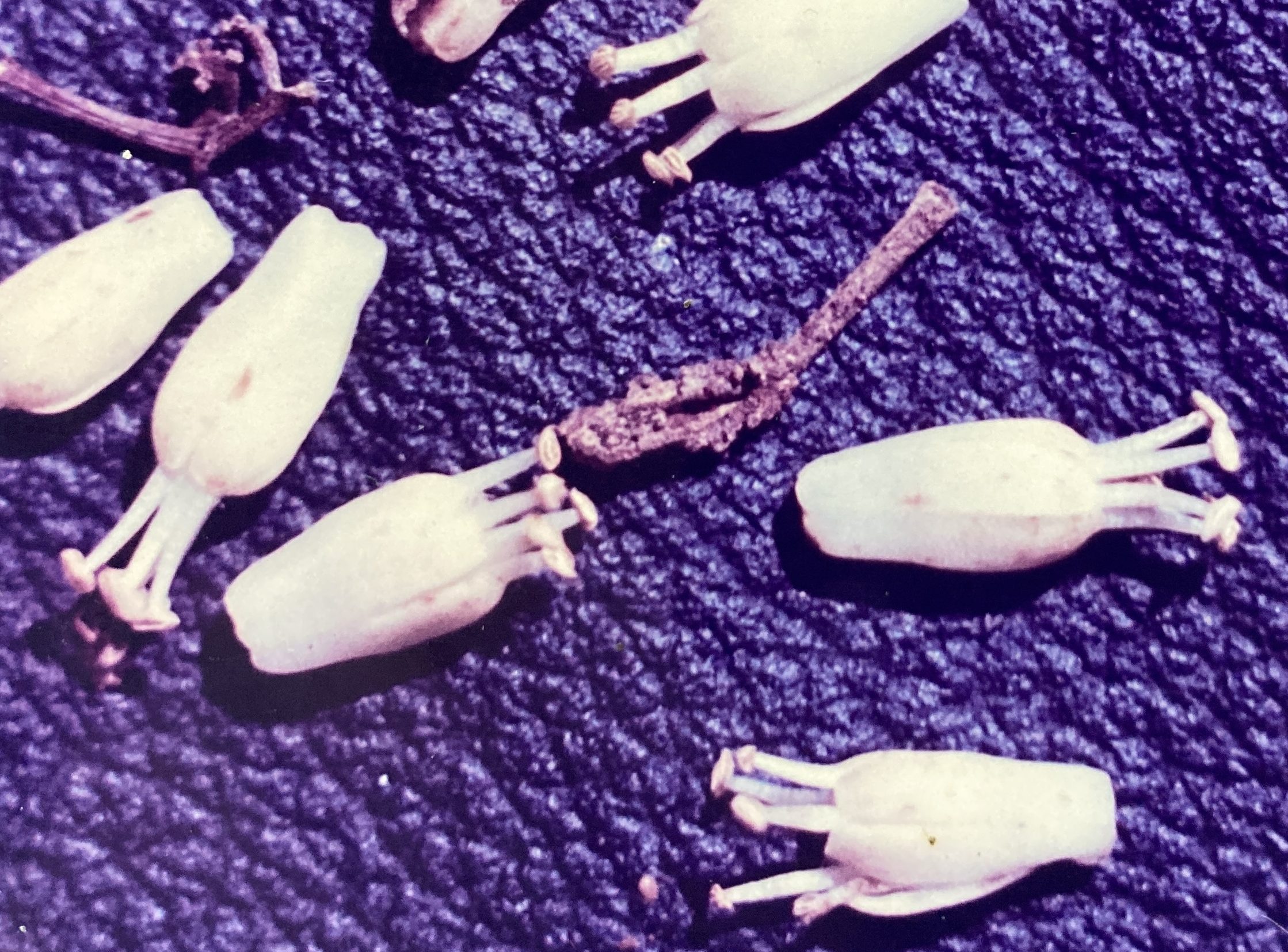Chimarrhris latifolia Standl.
Rubiaceae
YEMA DE HUEVO
Occasional evergreen canopy tree (25-30 m) known for its hard, yellow wood. With its tall, thin buttresses and distinctive bark color, Yema de huevo has a striking, unusual appearance. A resident of the very humid tropical lowlands, this species grows in primary forests found on the wet, poorly drained soils of stream-banks and low-lying valleys. In Manuel Antonio, Yema is thinly scattered throughout such habitats, avoiding the drier hillside and coastal regimes.
Description: Yema de Huevo is a tall tree with a columnar trunk of large diameter (measuring 1 m or more). Though of imposing stature, the somewhat irregular bole is often angular and out-of-round. Distinctive – long, thin and straight – buttresses (2 m high and 1 meter long) surround the bases of larger individuals. Yema de huevo bark is an eye-catching tan or creme-yellow color – a unique hue that helps in the identification of this species. The bark is also marked by fine, vertical striations (especially evident along the narrow ridges that top the buttresses), and it exfoliates in thin, irregularly-shaped sheets. Branching occurs along the upper fifth of the bole and these, primarily vertical, limbs produce a rounded, open crown. Leaves – typical of the Rubiaceae family – are simple, of opposite arrangement, and widely elliptical in shape. They are relatively large (14 cm by 6 cm), with short, stubby drip-tips and very long petioles (3.5 cm). The glossy and smooth Yema de Huevo blades, notable for their bright yellow-green color, are pinnately patterned by conspicuous, white primary and secondary leaf veins. New foliage and twig growth begin in May and continue into July or August. As the paired leaves emerge from twig tips, they are initially covered by two large (4 cm), light green, triangular stipules that are subsequently shed. Seen on the forest floor, these stipules provide the first indication that a new growth and fertility cycle is underway in the Yema crown far above. During leaf development, the branches also grow, extending as series of short, flat twigs (1.5 cm) are added. Emerging terminally, each successive twig (bearing its own leaf pair) is rotated ninety degrees with respect to the previous one. This alternation of position helps prevent new leaf pairs from lying in the same plane as – and blocking the light from – older blades.
Flowers are generated in large (8 cm), green, thickly bunched (almost broccoli-like) panicles that grow from leaf axils. These panicles spend several months developing in the canopy before finally flowering for a brief period in late October and early November (secondary flowerings sometimes occur, later in the year). Then, the green buds mature into pale white blossoms (8 mm), each sporting a narrow, white corolla tube as its primary structure. Made from five fused petals, the corolla supports and envelopes an equal number of stamens that extend just to its end. A basalar green ovary and circular calyx complete the structure. Yema de Huevo flowers are strongly aromatic and their smell is sweet. Flowering periods are well synchronized, annual events of variable intensity. Often, multiple peaks in fertility occur during a single season.
Yema de Huevo fruits are tiny and inconspicuous. The green flower ovaries enlarge slightly, and, after maturing for several months, turn brown and dry. By then they have developed into small capsules (2 mm in diameter) that split longitudinally while still in the tree and release tens of minute (less than 1 mm), brown, flaky seeds. Harvests begin in February and last through April. For several months thereafter (through July), the spent, brown panicles are slowly shed from the trees and can be found on the ground. There, these now woody and stiff structures persist for as much as a year before disintegrating. Seeds germinate with the first rains of the ensuing wet season.
Similar Species: Yema de Huevo is, by far, the largest member of the Rubiaceae family present in Manuel Antonio National Park (MANP). The tree’s large, opposite, rounded foliage and massive, buttressed bole – taken together – distinguish it from all other large trees present in this park. Furthermore, the characteristically dense and closely-packed flower and fruit panicles are present nearly year round in the canopy – and can always be found on the forest floor underneath them. The Pilon (Hyeronima alchorneoides) tree has vaguely similar leaves, however they are alternately arranged. Pilon also lacks Yema’s woody panicles and its buttresses are low, rounded, and root-like.
Natural History: Yema de Huevo flowers, with their heavy, sweet aroma, attract bees and employ them as pollinators. The tree’s tiny seeds are wind-dispersed. Mounted at the ends of long and flexible branches, the dry panicles sway in the wind, allowing their shaker-like capsules to dust the air with myriad of these small samaras. The unusual growth pattern exhibited by Yema de Huevo twigs results in an alternation in the orientation of successive leaf pairs. Neighboring leaves thus lie in different planes, facilitating their reception of sunlight.
Uses: Yema de Huevo wood is heavy and prized for use in floors and other carpentry work. Allen (1956) says that it is fine grained and has a waxy appearance when finished and that it is rot-resistant when buried in the ground. Reportedly, soon after the wood is sawed and exposed to the air, it acquires an intense yellow or orange color. It is this attribute that is memorialized by the common name for this species, “yema de huevo”, literally meaning “egg-yolk”.
Distribution: In Manuel Antonio National Park (MANP), Yema de Huevo is found amid most of the regions primary forests, but it is absent from the immediate coastal zone. The tree is known from the Osa Peninsula and it is reportedly common all over the Zona Sur of Costa Rica (Allen, 1956). The species’ restricted range extends only from southwestern Costa Rica to Panama.




